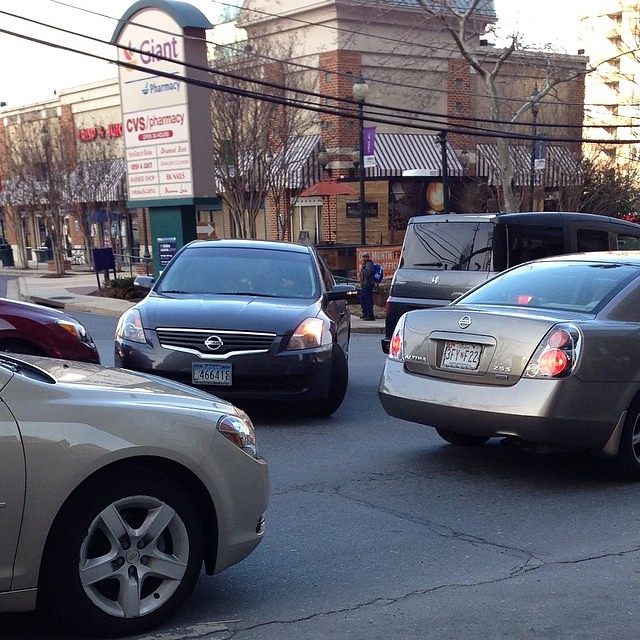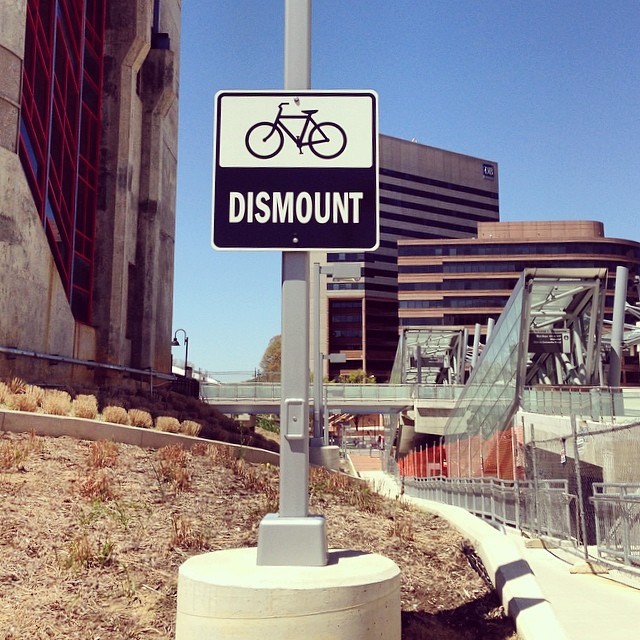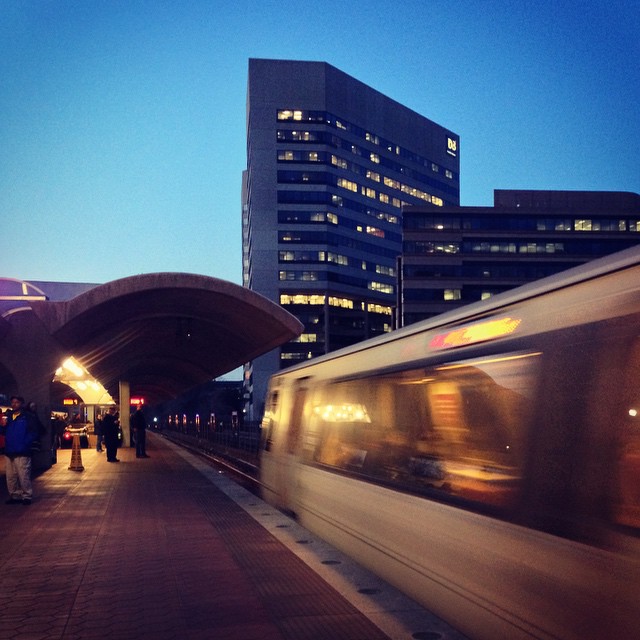
I commute to Silver Spring from DC every day and I hate it. As the train pulls into the station, I see the looming specter of the failed Silver Spring Transit Center and I’m filled with low-grade dread. Why do I hate it so?
Bisected by six-lane highways, downtown Silver Spring is a spectacularly pedestrian-unfriendly environment. Trudging the streets as cars whiz by at 50 mph, you immediately feel like an outsider. I have to cross a river of cars just to get a cup of coffee. Every morning, I press the “beg button” and wait for the light to change to ford the river of cars on East-West Highway.
If I’m lucky, the light turns red and everyone stops. More typically, the light turns yellow and drivers rush into intersection blocking the crosswalk. Pedestrians have to weave around cars, trucks and even 60-foot long articulated Metro buses. I get my coffee at Peet’s and repeat the process, keeping an eye out for impatient drivers coming up behind me as they blow through the shopping center stop sign.

Working in Silver Spring, there are some intersections you learn to avoid, like East-West Highway and Colesville Road. Accidents happen there regularly and sometimes include pedestrians. You also know where drivers make rolling rights on red and which crosswalks they ignore (all of them).
I bike everywhere in DC. I do not bike in Silver Spring. Why? There are no bike lanes of any kind. Traffic is fast and crowded. There’s BikeShare in Silver Spring but I’ve never seen anyone use it. People know that biking in the street is an experts-only activity.

While Silver Spring is pedestrian-unfriendly, it is filled with pedestrians. Huge employers are located downtown like Discovery and NOAA (where I work). They fill the streets at lunch hour and after work.
The neighborhood where everybody jaywalks – that’s what Greater Greater Washington calls it. They do a great job at illustrating the consequences of poor design. Silver Spring has organized the city for cars, not people.

There are places that I love in Silver Spring – like the cool Bump N’ Grind and the awesome Big Greek Cafe ($5 gyros on Wednesdays!). The city has also tried to sex up their image to sell apartments.
But poor design makes it impossible for new residents and local employees to spend their cash. You’re not going to go to that cool coffee place if crossing the street is a death-defying act. Until Silver Spring becomes truly walkable, it will continue to be regarded as a second-class city.

